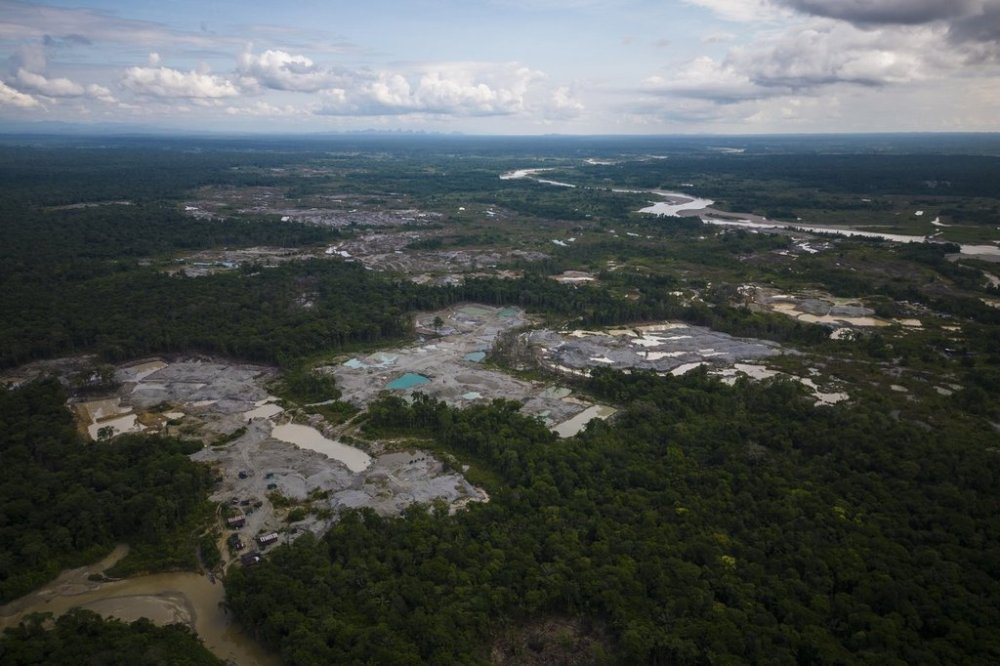Colombia reports 33% drop in deforestation in early 2025, with major progress in Amazon parks
Advertisement
Read this article for free:
or
Already have an account? Log in here »
To continue reading, please subscribe:
Monthly Digital Subscription
$0 for the first 4 weeks*
- Enjoy unlimited reading on winnipegfreepress.com
- Read the E-Edition, our digital replica newspaper
- Access News Break, our award-winning app
- Play interactive puzzles
*No charge for 4 weeks then price increases to the regular rate of $19.00 plus GST every four weeks. Offer available to new and qualified returning subscribers only. Cancel any time.
Monthly Digital Subscription
$4.75/week*
- Enjoy unlimited reading on winnipegfreepress.com
- Read the E-Edition, our digital replica newspaper
- Access News Break, our award-winning app
- Play interactive puzzles
*Billed as $19 plus GST every four weeks. Cancel any time.
To continue reading, please subscribe:
Add Free Press access to your Brandon Sun subscription for only an additional
$1 for the first 4 weeks*
*Your next subscription payment will increase by $1.00 and you will be charged $16.99 plus GST for four weeks. After four weeks, your payment will increase to $23.99 plus GST every four weeks.
Read unlimited articles for free today:
or
Already have an account? Log in here »
Hey there, time traveller!
This article was published 05/06/2025 (186 days ago), so information in it may no longer be current.
BOGOTA, Colombia (AP) — Colombia saw a 33% drop in deforestation in the first quarter of 2025 compared to the same period last year, the environment ministry said Thursday, citing stronger community coordination and a crackdown on environmental crime.
Speaking at a press conference, Environment Minister Lena Estrada Añokazi said deforestation fell from 40,219 hectares in early 2024 to 27,000 hectares this year. The government identified 18 active deforestation hot spots, including 13 in the Amazon and others in regions like Catatumbo, Arauca and the Pacific north.
“In the Amazon’s national parks, deforestation dropped by 54% … which is a very good result,” Estrada said, highlighting gains in Amazonian parks Tinigua, Chiribiquete and La Macarena.

The Amazon remains Colombia’s most affected region, accounting for 69% of the country’s deforestation. The departments — Colombia’s main administrative divisions — of Meta, Caquetá and Guaviare saw the biggest declines, while Putumayo had a slight increase.
Estrada attributed the decline to the government’s integrated plan to curb deforestation, which includes community agreements, institutional strengthening, and joint operations with the Defense Ministry and Attorney General’s Office.
A recent report by Colombia’s inspector general noted that while deforestation dropped overall, pressure on protected areas remains intense, with illegal coca cultivation and unregulated mining advancing into national parks. The independent watchdog said that between October 2024 and March 2025, nearly 88,900 hectares of forest were lost nationwide, much of it in areas designated for environmental conservation.
The minister said the efforts have led to key arrests, including of individuals tied to the environmental sector.
Looking ahead, Estrada outlined a territorial action plan to further engage local and Indigenous authorities. A series of regional meetings is set to begin in June, starting in Villavicencio with Amazon and Orinoquia leaders.
Deforestation in Colombia is mostly driven by land grabbing, illegal road building, cattle ranching, illicit mining and coca cultivation, the raw ingredient to produce cocaine.
—
The Associated Press’ climate and environmental coverage receives financial support from multiple private foundations. AP is solely responsible for all content. Find AP’s standards for working with philanthropies, a list of supporters and funded coverage areas at AP.org.

